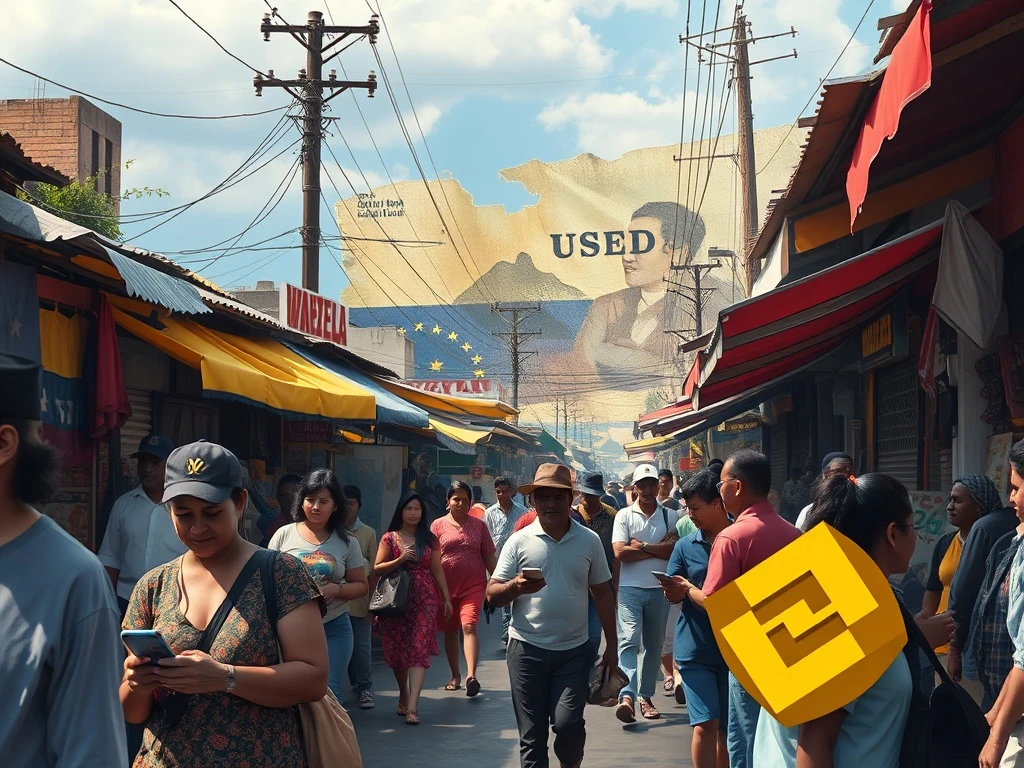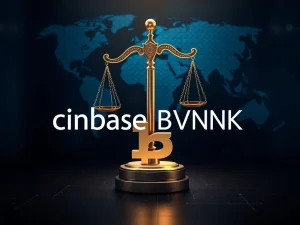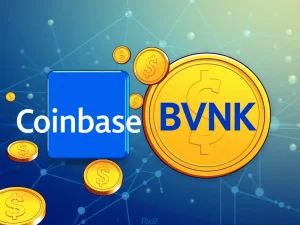Venezuela’s Urgent Crypto Revolution: How ‘Binance Dollars’ Combat Hyperinflation

In a dramatic shift, Venezuela is experiencing a profound financial transformation. Here, a new digital currency, often called ‘Binance dollars,’ is rapidly replacing the struggling national currency. This unprecedented **Venezuela crypto adoption** signals a critical turning point for millions navigating severe economic instability.
The Dire Reality of Hyperinflation Venezuela
Venezuela faces an economic crisis of staggering proportions. The country’s annual inflation rate has surged to an alarming 229%. This rapid devaluation of the bolívar, the national currency, devastates purchasing power. Consequently, citizens struggle to afford basic necessities. Mauricio Di Bartolomeo, co-founder of Ledn, highlighted the severe impact. He noted that the bolívar is now largely defunct in daily commerce. Its instability has forced people to seek more reliable alternatives.
Several factors contribute to this dire situation:
- **Hyperinflation:** Prices increase at an uncontrollable rate, eroding savings.
- **Strict Capital Controls:** Government regulations limit access to foreign currency.
- **Fractured Exchange Rates:** Multiple unofficial rates for the US dollar create confusion and arbitrage.
These challenges collectively push Venezuelans towards digital solutions. They desperately need a stable medium of exchange. The bolívar simply cannot fulfill this fundamental role.
The Rise of ‘Binance Dollars’ and USDt Currency
Amidst this economic turmoil, stablecoins like Tether’s **USDt currency** have emerged as a lifeline. Locally, people commonly refer to USDt as ‘Binance dollars.’ This nickname stems from its widespread trading on the Binance platform. These digital assets are pegged to the US dollar, offering a crucial hedge against inflation. Therefore, their value remains relatively stable, unlike the bolívar.
Di Bartolomeo explained the widespread use of ‘Binance dollars.’ People now utilize them for an extensive range of transactions. These include:
- Purchasing groceries and household items.
- Paying monthly condo fees and utility bills.
- Receiving salaries and making vendor payments.
This widespread integration demonstrates a fundamental shift. Stablecoins are no longer niche assets for crypto enthusiasts. Instead, they serve as essential tools for economic survival and daily living. They provide a much-needed sense of financial predictability.
Stablecoin Payments: A Daily Necessity
The transition to **stablecoin payments** is not merely a trend; it is a necessity. For many Venezuelans, USDt offers a practical solution to their financial woes. Businesses and individuals alike prefer to price goods and services in US dollars. Subsequently, they opt to receive payment in USDt. This preference ensures their earnings retain value over time. The liquidity and reliability of USDt make it the most favored exchange rate among consumers and vendors.
Currently, Venezuela operates with three primary rates for the US dollar:
- **Official Central Bank Rate (BCV):** Approximately 151.57 bolívars per USD.
- **Parallel Market Rate:** Around 231.76 bolívars per USD.
- **Binance USDt Rate:** Roughly 219.62 bolívars per USD.
The Binance USDt rate often reflects real-world market dynamics more accurately. It provides a reliable benchmark for transactions. This makes it a powerful tool for economic empowerment across all social classes.
Venezuela Crypto Adoption: A Global Leader
Data clearly illustrates the rapid pace of **Venezuela crypto adoption**. According to Chainalysis’ 2025 Global Crypto Adoption Index, Venezuela ranks 18th globally. More impressively, it stands at 9th when adjusted for population. This places the nation among the top countries embracing digital currencies. Last year alone, overall crypto activity surged by an impressive 110%.
Stablecoins play a dominant role within this ecosystem. They accounted for 47% of all Venezuelan crypto transactions under $10,000 in 2024. This highlights their function as a primary medium for everyday exchanges. From small bodegas to mid-sized enterprises, USDt has effectively replaced traditional fiat cash as the preferred settlement method. Only larger state-controlled entities remain bound by the official BCV exchange rate. Most market participants, however, favor the efficiency and accessibility of ‘Binance dollars.’
Navigating Capital Controls and Parallel Markets
Venezuela’s government-imposed capital controls significantly contribute to the rise of stablecoins. These controls restrict access to foreign currency, creating an artificial scarcity. Consequently, parallel markets for both cash and digital assets thrive. Official USD allocations reportedly go to regime-connected firms. These entities then resell the dollars at much higher parallel rates, generating substantial profits.
Di Bartolomeo elaborated on this phenomenon. He stated, “Capital controls also create a parallel market for cash and stablecoins, as economic actors refuse to accept the worthless local currency for payment.” He added, “If and when they reluctantly accept it, they rush to trade it into stablecoins or USD.” This urgency underscores the bolívar’s severe lack of trust. People quickly convert their local currency to assets that hold value, such as **USDt currency** or physical US dollars.
Crypto Rises Where Fiat Fails
The Venezuelan experience is not unique. In nations grappling with monetary instability and stringent capital controls, crypto adoption accelerates. People actively seek alternatives to failing national currencies. Venezuela, Argentina, Turkey, and Nigeria demonstrate similar patterns. In these countries, locals increasingly turn to stablecoins as inflation rates soar. This global trend highlights the inherent value proposition of digital assets in times of crisis.
Interestingly, even some traditional institutions are adapting. Following the latest US sanctions on Venezuela’s oil sector, some local banks have reportedly pivoted to stablecoins. Di Bartolomeo confirmed this trend. He mentioned, “Oil companies and other industries are also increasingly pivoting to them.” He further noted, “Reportedly, a limited number of local banks have started selling USDt to some businesses in exchange for bolívars to avoid restrictions.” This illustrates a broader recognition of stablecoins as a practical financial tool, even within regulated sectors.
The Enduring Impact of ‘Binance Dollars’
Ultimately, the widespread use of ‘Binance dollars’ and other stablecoins in Venezuela represents more than just a temporary workaround. It signifies a profound, long-term shift in the country’s financial landscape. This phenomenon provides a crucial lesson for other nations facing similar economic pressures. It proves that digital currencies offer a viable path to financial stability and economic freedom when traditional systems falter. The continued growth of **Venezuela crypto adoption** is a testament to the resilience and adaptability of its people. They have found a powerful new tool to combat the devastating effects of **hyperinflation Venezuela**.







